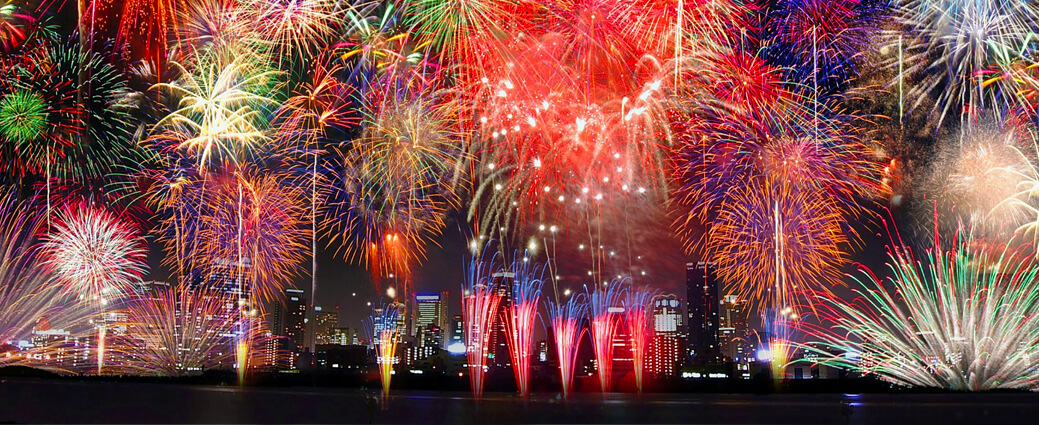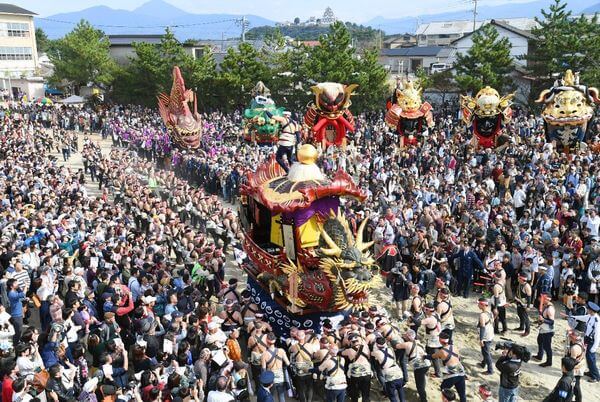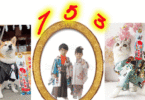Hi how are you? Today’s topic is “Matsuri(festival)” part 2 that I’d like to tell you more following Part 1.
Contents
How many festivals are held throughout the year in Japan?
It’s hard to say for sure how many festivals are held in Japan each year, but some estimates vary from 100,000 to 300,0001. That’s a lot of festivals!
Many festivals have their roots in traditional Chinese festivals, but have undergone extensive changes over time to have little resemblance to their original form.

Amabiki Sanrakuho ji (雨引山楽法寺) or in short, Amabiki Kannon (雨引観音) in Ibaraki-ken
Some are based around temples or shrines, others fireworks, and still others around contests where the participants sport loin cloths.
Festivals are often based around one event, with food stalls, entertainment, and carnival games to keep people entertained.
I’m not sure how Japan compares to other countries in the world in terms of the number of festivals, but I think Japan has a very rich and diverse festival culture that reflects its history and culture.
There are many possible reasons for why there are so many festivals throughout the year in Japan. According to some sources, Japanese festivals are held to:
★ Thank nature and God
★ Celebrate life
★ Foster a community
★ Explore their energy and let loose
★ Have a deeper understanding of Japan
Most festivals are held annually and celebrate the shrine’s deity or a seasonal or historical event.
During the festival, Japanese people believe that the spirits of their ancestors return to Earth to visit their relatives.
To welcome the spirits, many Japanese will return to their ancestral homes, clean graves, and leave food offerings at altars and temples.
Some festivals also have specific purposes, such as protecting the harvest, pacifying spirits and preventing or curing disease.
For example, the Nagoshi Taisai (grand festival) that you mentioned is held to purify oneself from misdeeds and misfortunes of the first half of the year.
People pass through a large hoop made of straw to cleanse themselves.
Festivals are an essential part of Japanese people’s lives. They create extraordinary memories and strengthen the bonds between people and nature.
Now, let’s list popular festivals in the order of winter, spring, summer, and autumn
Here are some examples of popular festivals in Japan according to the seasons:
Winter
★Nozawa Onsen Fire Festival

Mid-January Nozawa Onsen, Nagano
★Sapporo Snow Festival
 Early part of February Sapporo, Hokkaido
Early part of February Sapporo, Hokkaido
★Nagasaki Lantern Festival
 Mid-February Nagasaki-shi, Nagasaki-ken
Mid-February Nagasaki-shi, Nagasaki-ken
★Omihachiman Sagicho Fire Festival
 Mid-March Omihachiman, Shiga-ken
Mid-March Omihachiman, Shiga-ken
Spring
★Kanamara Matsuri

Beginning of April Kawasaki-shi, Kanagawa-ken
★Takayama Spring Festival

Mid-April Takayama City, Gifu Prefecture
★Hakata Dontaku
 Beginning of May Fukuoka-shi, Fukuoka-ken
Beginning of May Fukuoka-shi, Fukuoka-ken
★Sanja Matsuri
 Mid-May Asakusa, Tokyo
Mid-May Asakusa, Tokyo
★Sanno Festival
 Beginning of June Chiyoda-ku, Tokyo
Beginning of June Chiyoda-ku, Tokyo
Summer
★Gion Matsuri

July Kyoto City, Kyoto
★Fukuoka Hakata Gion Yamakasa

First half of July Fukuoka-shi Fukuoka-ken
★Tenjin Matsuri

End of July Osaka
Sumidagawa Fireworks Festival
 End of July Tokyo
End of July Tokyo
★Nebuta Matsuri
 Beginning of August Aomori City, Aomori Prefecture
Beginning of August Aomori City, Aomori Prefecture
★Kyoto Gozan no Okuribi
 Mid-August Kyoto
Mid-August Kyoto
★Koenji Awa Odori
 End of August Koenji, Tokyo
End of August Koenji, Tokyo
★Awa Odori
 Mid-Augsut Tokushima-shi, Tokushima-ken
Mid-Augsut Tokushima-shi, Tokushima-ken
★Okinawa island-wide Eisa Festival
 End of August Okinawa
End of August Okinawa
★Kishiwada Danjiri Matsuri
 Mid-September Kishiwada-shi, Osaka
Mid-September Kishiwada-shi, Osaka
Autumn
★Nihonmatsu Lantern Festival
 Beginning of October Nihonmatsu City, Fukushima Prefecture
Beginning of October Nihonmatsu City, Fukushima Prefecture
★Sawara Grand Festival
 Early part of October Katori, Chiba-ken
Early part of October Katori, Chiba-ken
★Jidai Matsuri
 on October 22 (rescheduled in case of rain) Kyoto
on October 22 (rescheduled in case of rain) Kyoto
★Tori no Ichi
 November Yokohama, Kanagawa-ken
November Yokohama, Kanagawa-ken
★Karatsu Kunchi

Early part of November Karatsu city, Saga prefecture
★Chichibu Night Festival

Early part of December Chichibu-shi, Saitama-ken
Please note that these are just a few examples, and there are countless other festivals celebrated throughout Japan during each season.
Finally, here’s a video of “Kyoto Festival: Jidai Matsuri”, have a fun with it.








